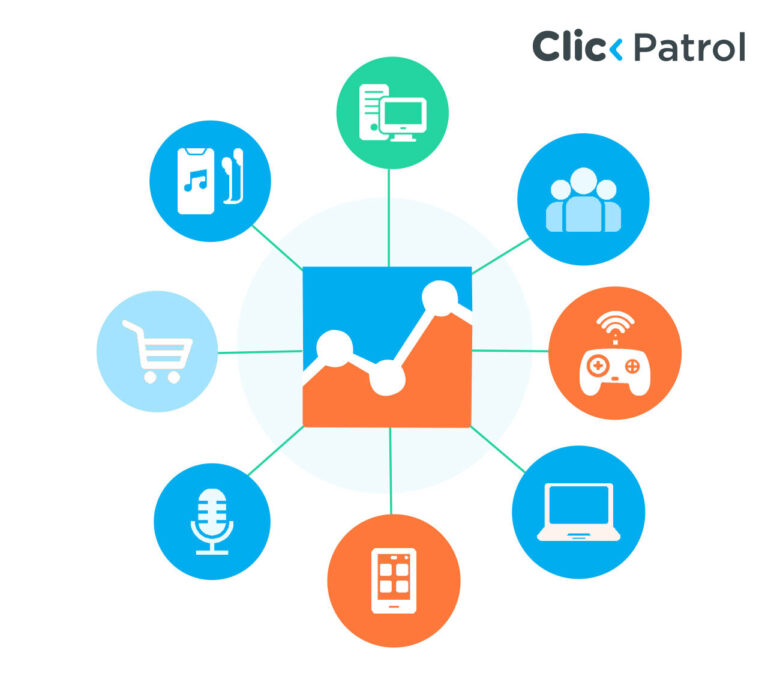
Case Studies: Ad Fraud Prevention
Abisola Tanzako | Sep 18, 2024

Table of Contents
Ad fraud prevention or invalid traffic prevention has become synonymous with the web advertising, costing companies billions of dollars. Some include manipulating ad metrics through deceptive practices that result in wasted ad spend and ruining overall performance figures. Different categories of ad fraud include click fraud, impression fraud, and bot traffic. The most common types are click fraud, where high traffic is directed to the ad, and impression fraud, where the number of ad views is increased.
Another factor is that bot traffic employs system-generated behavior imitating human action more elaborately, making it harder to identify. Ad fraud’s impact is highly negative and includes direct monetary loss, harm to reputation, and loss of trust in digital advertising. This article will highlight some case studies and ad fraud prevention measures to help provide insights into defense against ad fraud.
Case studies of ad fraud prevention
Below are case studies of ad fraud prevention
1. Starcraft
Starcraft is one of the most well-known web media operators that aims to help customers make the right decision by offering useful information, such as comparing goods or services in different spheres, including finance, human resources, cosmetics, and others. However, with the advancement of a second line, web media business and advertising costs increased, and with it came the problem of ad fraud, and they became aware of the necessity of an effective countermeasure against ad fraud to protect the advertising budget.
To solve this problem, Starcraft looked for an ad fraud countermeasure to enhance ROAS by 228% and CVR by 217; they also tasked the solution with covering all media types. The countermeasure system to ad fraud allowed
Starcraft to preserve its advertising expenditure and, at the same time, improve its advertising effectiveness. Another factor the company noted was the ability to detect and prevent invalid activities, which led to refunds for fraudulent advertising expenses, improving profitability.
2. Daar-om.nl
Daar-om. nl, an advertising agency operating from the Netherlands, focused on assisting SMEs to optimize their online presence through readily understandable and relevant online marketing strategies. They understood that not all visits arrived at them and that their clients’ ads were high quality. However, they needed help evaluating the non-human traffic in their customers’ ads.
They also had no way of rejecting them. This challenge means that the marketing budget was not used in the best manner it could have been used. But they later realized they could choose a prevention software and linked some of their accounts to an ad fraud prevention software that checked their clicks and non-human traffic. In which they observe the effect of invalid clicks on their accounts.
Some of the accounts had an invalid click rate exceeding 20 percent. They deliver better outcomes for customers, enhancing the satisfaction of the services they deliver, and they are now in a position to filter out up to 25% of the fake clicks, which enabled them to manage their adverts budget in the right manner.
3. Ateam
Ateam company designs, develops, and manages games, applications, and an e-commerce platform that brings individuals together. They have loyal users visiting their media platforms daily, and recently, they they started launching advertising operations to attract even more users and enable advertisers to reach their target consumers.
Nevertheless, managing ad operations has remained an area of concern to Ateam due to inefficient management. They faced problems with bots and high identical user traffic on their PPC ads, resulting in high CPC rates and halting ad accounts. This ad fraud also affected their budget, engagement rate, productivity, and internal resources in that it took the company’s internal team many person-hours to detect the fraud.
To these challenges, Ateam refocused development resources from engineering from the in-house engineering to access analysis and other preventive mechanisms. Some of them included ad fraud solutions where they engaged in different tests that eased the ways of detecting and reporting fraud, hence saving much of their time and efforts; secondly, in requesting refunds for various ad networks, they found ways that eased their time and efforts hence regaining much of their efforts.
4. Conservio
Conservio, a nature-positive travel company with fully optimized ad campaigns, saw high ad spending compared to a relatively low conversion rate. It believed its competitors verified their prices, crawled their sites, or actively monitored their campaigns. They had to use a PPC protection tool duly subscribed to the services for two weeks of demonstration, and within that period, they got results and made observations.
One major observation was non-human traffic, which was as high as 14%. After this, they started observing the positive changes that included cutting a 17% discount on their campaigns, a 14% increase in cleaner traffic, and more traffic that led to an increase in ROI by various conversions within the first month of using the tool.
5. Wilson PC
Wilson PC is a company that serves personal injury lawyers, local businesses, and e-commerce businesses specializing in Google Ads personnel and SEO. They subscribed to ad fraud prevention software to deal with click fraud and no longer waste advertising budget, improving the company’s digital marketing mix.
As the company does not use Display Network, there is always a small possibility of click fraud, which was to be prevented after the purchase of special software for the latter purpose for their accounts. They consider issues such as cost per case, which is very applicable and significant in the legal profession.
After enabling ad fraud prevention software, It prevented 883 fake clicks and helped save $47,963 on advertising costs. This resulted in a lower Invalid Click Rate for Google Search Campaigns, which decreased to 2. 97% in May 2024 from 7. 91%, as seen above.
6. Viber
Viber is a free social messenger and call application through which people can easily connect to their friends and family members irrespective of distance. Millions of users registered with the app, all communicating through several options, and it was purchased by Rakuten, a Japanese electronic commerce and Internet company. When companies expand at such a rate, it is not uncommon for them to experience fraud cases, which Viber wanted to counter.
Due to the need to expand its paid activity, Viber had to involve an agency coordinating media buying through ad networks. The agency was also tasked with account management and partnership, and it had the responsibility to introduce and tie Viber with new partners while simultaneously ensuring the purity of traffic and, in effect, ensuring that the application does not become an affiliate for fraudulent actions.
Ad fraud prevention mechanisms
Ad fraud prevention mechanisms include:
- IP blocking and blacklisting: This method involves finding out and filtering IP addresses commonly used to originate invalid traffic. Therefore, by creating a list of such IPs, advertisers will be able to block such IPs from accessing the ads. Adjust the blacklist according to the new data and reports of suspicious users.
- Rules-based prevention: This approach identifies patterns suggestive of ad fraud by applying predetermined heuristic rules. For example, it can mark high click-through rates (CTR) or frequent and consecutive clicks from the same user as suspicious.
- Anomaly detection entails tracking traffic flows and looking for anomalies. Anomalies like traffic surges or suspicious user behavior are signs of fraudsters in the system.
- Machine learning: Sophisticated machine learning models can process many tickets and find signs of fraud that might be hard to notice otherwise.
- Honeypots: Honeypots are specially designed systems that serve as targets for fraudsters. By interacting with these decoys, data on fraudulent behavior can be collected and avoided, influencing advertisements.
Key factors and checklist to avoid ad fraud
Fraud prevention is always an active issue that requires monitoring, creativity, and teamwork. The case studies detailed in this article point to the effectiveness of various approaches and tools in combating ad fraud. A key lesson from the digital advertising analysis is that following trends in this field is always important. This proactive approach is critical to maintaining credibility and trust in digital advertising.
With trends and new approaches, stakeholders can prevent ad fraud and maintain the proper environment for all customers and partners.
FAQs
Q. 1: What happens when ad fraud occurs?
Ad fraud risks include:
Advertisers’ loss of funds.
A negative impact on brand image.
Consumer trust in online advertising.
It also skews performance metrics figures and makes obtaining accurate performance figures for ad campaigns almost impossible.
Q. 2: What is the role of AI & Machine Learning in Ad fraud detection?
AI and machine learning can sort through huge amounts of data to find trends that suggest fraud. Such technologies can pinpoint instances of ad fraud and the likelihood of suspicious activities with higher accuracy and speed.
Q. 3: How useful is blockchain in ad fraud?
Blockchain technology can help record ad transactions and make them transparent and secure, thus increasing efficiency and effectiveness. It also aids in the mitigation of scams and maintains the authenticity of ad data, as it supplies direct proof of interactions with advertisements.





